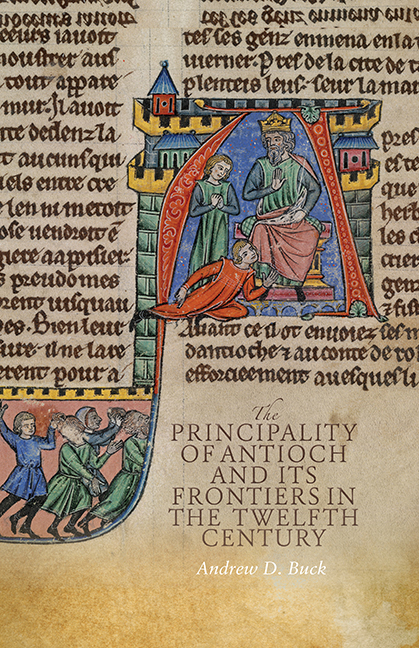Book contents
- Frontmatter
- Contents
- List of Maps
- Acknowledgements
- Abbreviations
- Introduction
- 1 The Extent of the Principality
- 2 The Rulers of Antioch
- 3 Central Governance and Military Service
- 4 Lordship in the Principality
- 5 A Frontier Society? The Nature of Intercultural Relations
- 6 Relations with Byzantium
- 7 Antioch and the Latin East
- Conclusion
- Bibliography
- Index
3 - Central Governance and Military Service
Published online by Cambridge University Press: 09 May 2017
- Frontmatter
- Contents
- List of Maps
- Acknowledgements
- Abbreviations
- Introduction
- 1 The Extent of the Principality
- 2 The Rulers of Antioch
- 3 Central Governance and Military Service
- 4 Lordship in the Principality
- 5 A Frontier Society? The Nature of Intercultural Relations
- 6 Relations with Byzantium
- 7 Antioch and the Latin East
- Conclusion
- Bibliography
- Index
Summary
Now we have established the ways in which princely power was bestowed and legitimised, it is also important to outline how it was physically manifested. As already noted, historians have primarily seen the princes of Antioch as supreme rulers, able to exercise near-complete authority and to demand unrestricted services from fiefholders. In the context of the previous chapter and the realisation that the internal balance of power altered after 1130, this requires further examination. Due to the difficulties of the source material, however, it is impossible to cover all potential avenues. For example, little is known of the ruler's income. It is almost certain that the prince was the single largest landholder, and so the ruler's demesne, in addition to ensuring his military superiority over the other major landholders, would also have formed the basis of princely finances. Monies would have been gathered from landholding rents and taxes, such as the ninth-part of revenues the princes appear to have retained over some fiefs, the payments made on harvests, and even the income from fishing rights at the Lake of Antioch (situated on the Amuq). Of greater significance, though, would have been places along the coast, mainly St Simeon, Latakia and Jabala, as well as river ports like Arzghan, as these would have allowed for trade exactions – an important boon for any ruler. Yet, despite charter evidence which demonstrates that money and commerce were being trafficked through these sites, like the confirmation of a money-fief of two-thousand bezants to Walter II of Sourdeval at Jabala in 1179 and the granting of trade rights to the Italian states of Venice, Genoa and Pisa, there is little specific evidence for exact figures. Therefore, although a severe economic disparity emerged between the prince and the Church at Antioch, which proved a source of great friction throughout this period, it was not recorded how or why this occurred.
- Type
- Chapter
- Information
- Publisher: Boydell & BrewerPrint publication year: 2017



